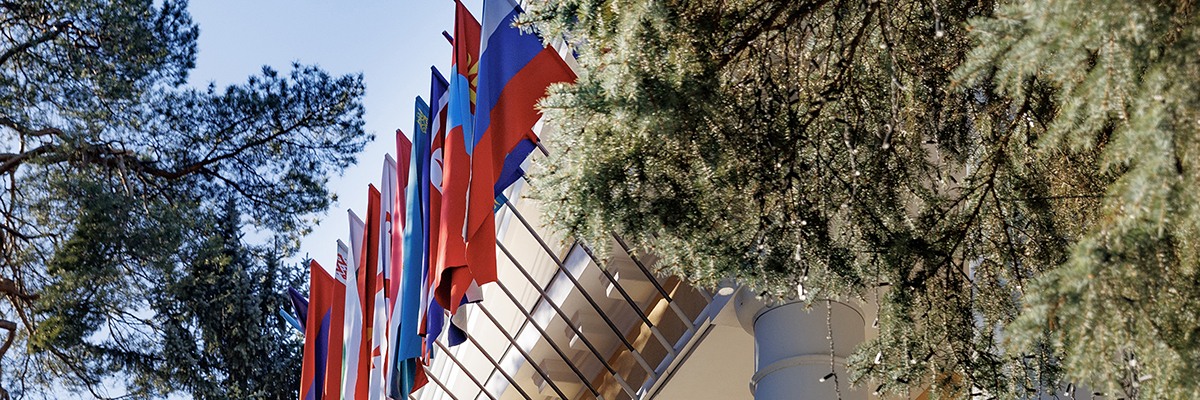JINR
The Joint Institute for Nuclear Research is an international intergovernmental scientific research organization established through the Convention signed on 26 March 1956 by eleven founding States and registered with the United Nations on 1 February 1957. JINR is situated in Dubna city, the Moscow Region, the Russian Federation. JINR a world famous scientific centre that is a unique example of integration of fundamental theoretical and experimental research with development and application of the cutting edge technology and university education. The rating of JINR in the world scientific community is very high.
JINR Member States and Associate Members
JINR has at present 15 Member States: Armenia, Azerbaijan, Belarus, Bulgaria, Cuba, Arab Republic of Egypt, Georgia, Kazakhstan, D. P. Republic of Korea, Mongolia, Romania, Russia, Slovakia, Uzbekistan, and Vietnam. Participation of Germany, Hungary, Italy, the Republic of South Africa and Serbia in JINR activities is based on bilateral agreements signed on the governmental level. The Supreme governing body of JINR is the Committee of Plenipotentiaries of the governments of all 15 Member States.
According to its Charter, the Institute exercises its activities on the principles of openness to all interested states for their participation and equal mutually beneficial cooperation.
On 22 November 2021, at the session of the Committee of Plenipotentiary Representatives of the Governments of the JINR Member States held in Bulgaria, a Declaration was adopted to highlight the value of international scientific and technological integration in solving the tasks of strengthening peace, mutual understanding, and socio-economic progress of all the countries.
On 26 March 2018, the high-level International Conference “JINR: 25 Years of a New Era” was held in Dubna. It was dedicated to the 25th anniversary of a new era in the history of the JINR when a group of independent states entered JINR as its new Member States. Members of the JINR Committee of Plenipotentiaries, representatives of Russian and foreign ministries and departments, ambassadors extraordinary and plenipotentiary and representatives of Embassies of foreign states in the Russian Federation, representatives of numerous media were among the participants of the conference.
Organization and development purposes
The Institute was established with the aim of uniting the efforts, scientific and material potentials of its Member States for investigations of the fundamental properties of matter. During 60 years JINR has accomplished a wide range of research and trained scientific staff of the highest quality for the Member States. Among them are presidents of the national Academieis of Sciences, leaders of large nuclear institutes and universities in many JINR Member States.
The Institute possesses a mighty basis: traditions of scientific schools acknowledged worldwide; basic facilities with unique capacity to solve challenging tasks in various fields of modern physics; the status of an international intergovernmental organization.
The research policy of JINR is determined by the Scientific Council, which consists of eminent scientists from the Member States as well as famous researchers from China, France, Germany, Greece, Hungary, India, Italy, Switzerland, the USA, the European Organization for Nuclear Research (CERN) and others.
The concept of further development of JINR as a multidisciplinary international centre for fundamental research in nuclear physics and related fields of science and technology implies efficient use of the theoretical and experimental results, as well as methods and applied research at JINR in the field of high technology through their application in industrial, medical, and other technical development.
The Institute’s development strategy is detailed in the Seven-Year Plan for the Development of JINR.
 A meeting of the JINR Scientific Council
A meeting of the JINR Scientific Council








